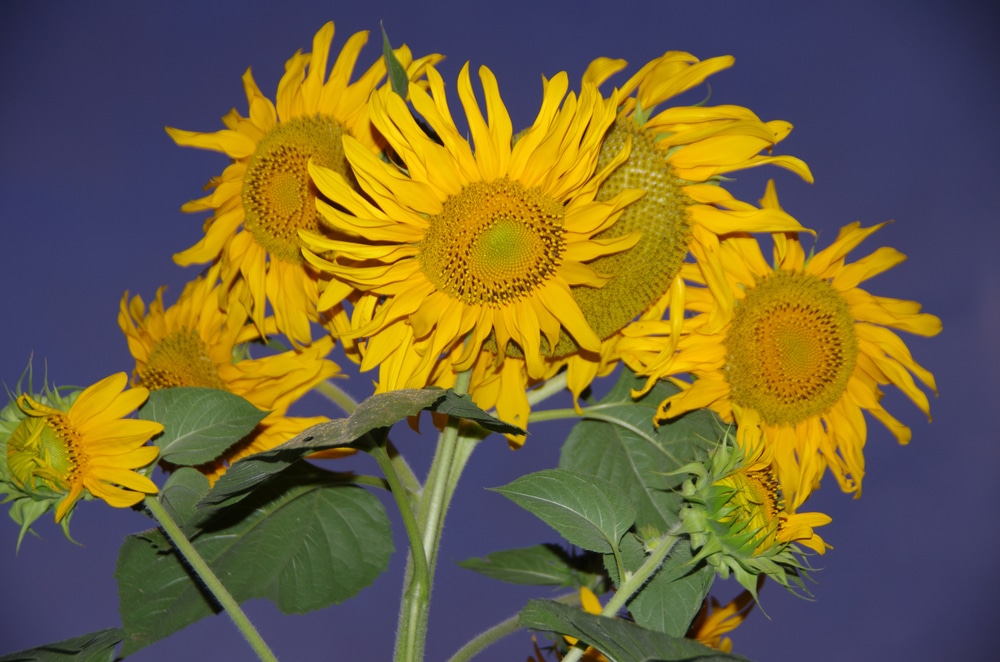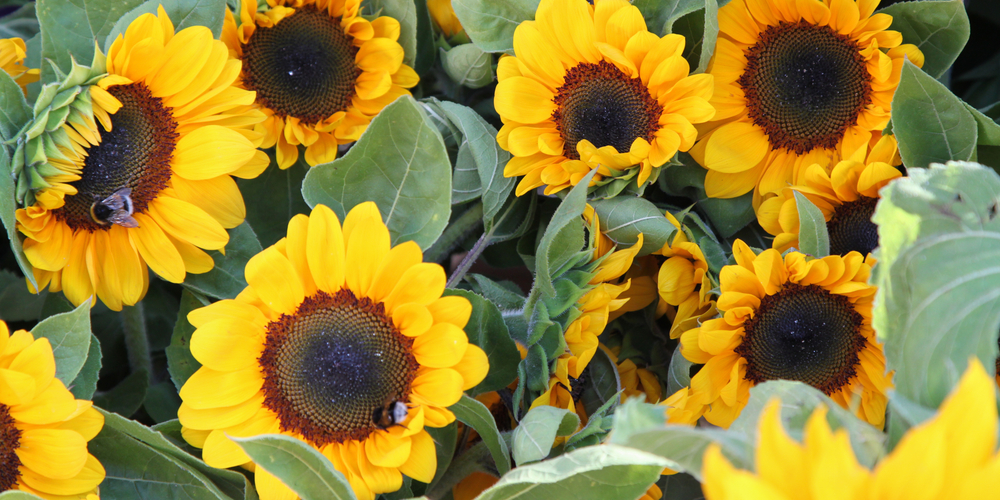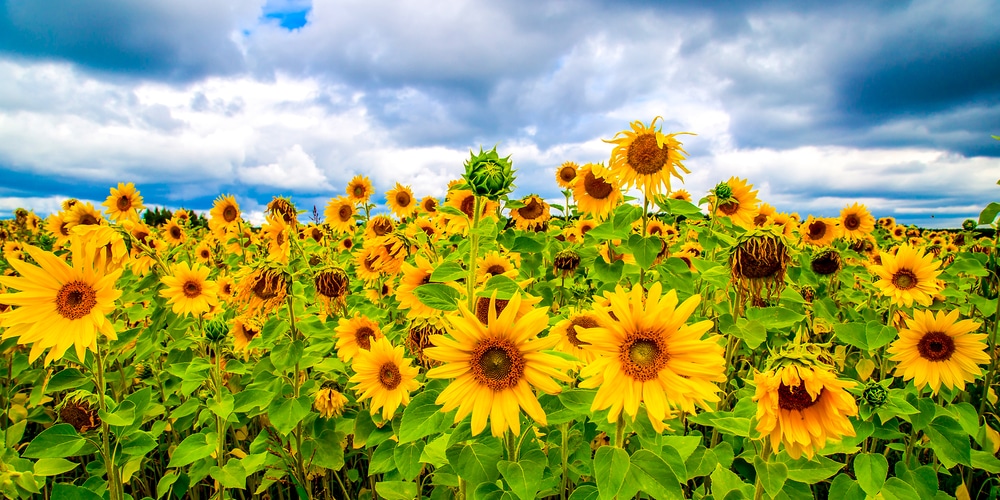| Question | Why are sunflower petals falling off? |
|---|---|
| Answer | It can be natural aging or due to stress factors like water, heat, pests, or diseases. |
| More Info |
|
Sunflower petals falling off can be a natural part of the plant’s lifecycle as it matures and begins to go to seed. However, if the petals drop prematurely, it might be due to stress factors such as insufficient water, excessive heat, pests, or diseases.
Ensuring sunflowers receive adequate water, especially during hot periods, and protecting them from pests and diseases can help maintain their health. Sunflowers thrive in full sun and well-drained soil, so providing optimal growing conditions is key to preventing premature petal loss.
Sunflower Petal Loss: An Overview
Sunflowers, with their vibrant and large blooms, are a sight to behold in any garden. However, gardeners sometimes face the issue of petal loss, which can be distressing and perplexing.
Common Causes of Petal Loss:
- Watering Concerns: Both underwatering and overwatering can lead to petal drop.
- Sunflowers thrive in well-drained soil with consistent moisture, so it’s essential to achieve a balance.
- Maturity: Naturally, as sunflowers mature, their petals will start to wilt and fall off, often signaling that it is time to harvest the seeds.
- Pest Infestation: Insects such as borers and caterpillars can damage the petals and foliage, causing them to fall prematurely.
Care Tips:
- Ensure adequate hydration; adjust watering based on the soil’s moisture level.
- Use sharp pruning shears to harvest the seed head once petals fall due to maturity.
- Opt for a well-draining potting mix to prevent root rot from excessive water retention.
Pest Management:
- Implement regular inspections for signs of pests and take immediate action if any are spotted.
- Employ appropriate pest control methods, such as natural predators or insecticidal soap, as preventive measures.
Causes of Sunflower Petal Drop
When sunflowers begin to lose their petals prematurely, it can be attributed to two main causes: environmental stress and pests or diseases. These factors can have significant impacts on the health and aesthetics of these vibrant plants.
Environmental Stress Factors
Water: Sunflowers rely on a balance of moisture.
- Both underwatering and overwatering can lead to petal drop.
- Underwatering leaves plants dehydrated and stressed, causing the petals to wilt and fall. Conversely, overwatering can lead to root rot, weakening the plant and resulting in loss of petals.
- Nutrient Deficiency or Excess: Accurate soil nutrition is crucial.
- A lack of essential nutrients, like nitrogen, phosphorus, and potassium, can inhibit plant growth and cause petals to drop. Similarly, too much fertilizer can damage the roots and affect the bloom’s stability and health.
- Temperature Fluctuations: Sunflowers thrive in stable conditions.
- Extreme temperatures, whether hot or cold, can stress these plants, leading to premature petal shedding.
Pest and Disease Influence
Pests: Common sunflower pests include:
- Borers and Caterpillars: These burrow into stems, disrupting the plant’s structure.
- Cutworms and Grasshoppers: They feed on leaves, affecting overall plant health.
- Japanese Beetles: They eat the petals and leaves, leading directly to petal loss.
Diseases: Fungal diseases like rust or mildew can compromise sunflower health and lead to petal drop. Monitoring for signs of infection and acting promptly is key to managing diseases before petal loss occurs.
Preventative Measures and Care
To maintain the vibrancy and longevity of sunflower petals, gardeners should focus on key care areas: watering, soil condition, and sunlight exposure.
Proper Watering Techniques
Consistent watering is crucial for sunflower health. Sunflowers require:
- Deep watering: 1-2 inches of water per week.
- Morning watering: Reduces evaporation and leaf wetness duration, mitigating fungal diseases.
Note: Overwatering leads to root rot, while underwatering causes drooping and faster petal loss.
Optimal Soil Conditions
For sunflowers, soil plays a pivotal role:
- Well-draining soil: Prevents waterlogging.
- Nutrient-rich composition: Enhances growth. Aim for soil enriched with compost or a balanced fertilizer.
Tip: Test your soil’s pH; sunflowers thrive in a pH range of 6.0 to 7.5.
Adequate Sunlight and Spacing
Sunflowers need:
- Full sun exposure: Ideally 6+ hours of direct sunlight daily.
- Proper spacing: Plants spaced 6-24 inches apart improve airflow and reduce disease risk.
Diagnosing Petal Drop
When a gardener notices the petals of their sunflowers falling off, it’s important to promptly identify the underlying causes. This can be done through careful observation of visual symptoms and, if necessary, precise laboratory testing to achieve a clear diagnosis.
Visual Symptoms
Underwatering or Overwatering: Sunflower petals may drop due to insufficient or excessive water.
- One should check the soil moisture; dry soil indicates a need for watering, whereas waterlogged soil suggests the need to reduce watering frequency.
- Pest Infestation: The presence of pests can be another cause of petal drop. Common culprits include:
- Beetles
- Cutworms
- Borers
- Moths
- Grasshoppers
These pests may leave behind visible damage on the plant, such as holes in the petals and leaves or the actual insects on the plant.
Laboratory Testing
If visual inspection does not present a clear cause, laboratory testing can be beneficial. Laboratory tests may include:
- Soil Analysis: To check for nutrient deficiencies or toxicities.
- Pathogen Identification: To detect the presence of fungal, bacterial, or viral diseases.
Sample submission to a local extension office or agricultural lab often yields conclusive results, guiding the grower towards appropriate remedies.
Treatment and Management Strategies
When addressing the premature falling of sunflower petals, gardeners should focus on integrated approaches including pest control, disease management, and plant rehabilitation for effective recovery.
Pest Control Methods
Pest infestation can lead to sunflower petals shedding. Key pests include borers, caterpillars, cutworms, Japanese beetles, and grasshoppers. To combat these effectively:
- Physical Removal: Manually remove visible pests from plants.
- Biological Control: Introduce natural predators like ladybugs.
- Chemical Pesticides: Apply as a last resort, considering eco-friendly options.
Disease Mitigation
Diseases often cause damage to sunflowers, leading to petal loss. Here are steps to prevent or manage diseases:
- Fungicide Applications: Use only when necessary and as per the manufacturer’s guidelines.
- Proper Watering: Avoid overwatering which can promote fungal growth.
- Good Air Circulation: Ensure plants are not too crowded.
- Healthy Soil: Use a well-draining potting mix to prevent root rot.
Rehabilitation and Recovery
Once pests and diseases are under control, sunflowers can be rehabilitated:
- Adequate Watering: Adjust the watering schedule based on weather and soil moisture levels.
- Nutrient Management: Apply a balanced fertilizer as needed to support plant recovery.
- Pruning: Trim away damaged petals and foliage to redirect the plant’s energy to new growth.
Frequently Asked Questions
Sunflowers captivate observers with their vibrant hues, but when petals fall, one may wonder why. These frequently asked questions delve into the typical causes and meanings behind sunflower petals shedding.
What causes the loss of petals in sunflowers during the autumn season?
In autumn, sunflowers naturally reach the end of their life cycle. As temperatures drop and daylight decreases, the plants prepare for dormancy or complete their lifecycle, resulting in petal loss.
What does it signify when a sunflower starts to lose its petals?
A sunflower shedding petals is a sign of its life cycle progressing. It may also indicate stress factors such as inadequate water, poor soil conditions, or pest infestations.
Can you explain the significance of a sunflower that is depicted with shedding petals in tattoos?
A sunflower with shedding petals in tattoos often symbolizes the acceptance of change or loss. It can represent the transient nature of beauty and life’s impermanence.
Is it a natural process for sunflowers to drop their petals?
Yes, it is natural for sunflowers to eventually shed their petals as part of their growth and reproductive process, usually after pollination.
What factors might lead to a sunflower’s leaves detaching from the stem?
Detachment of sunflower leaves from the stem may result from environmental stress such as overwatering, underwatering, or pest damage. Physical damage to the stem can also cause leaves to detach.
What is the recommended frequency for watering sunflowers to maintain their health?
Sunflowers typically need 1 to 1.5 inches of water per week.
During hot, dry periods, more frequent watering may be necessary to keep the soil moist but not waterlogged.
Last update on 2024-04-28 / Affiliate links / Images from Amazon Product Advertising API






